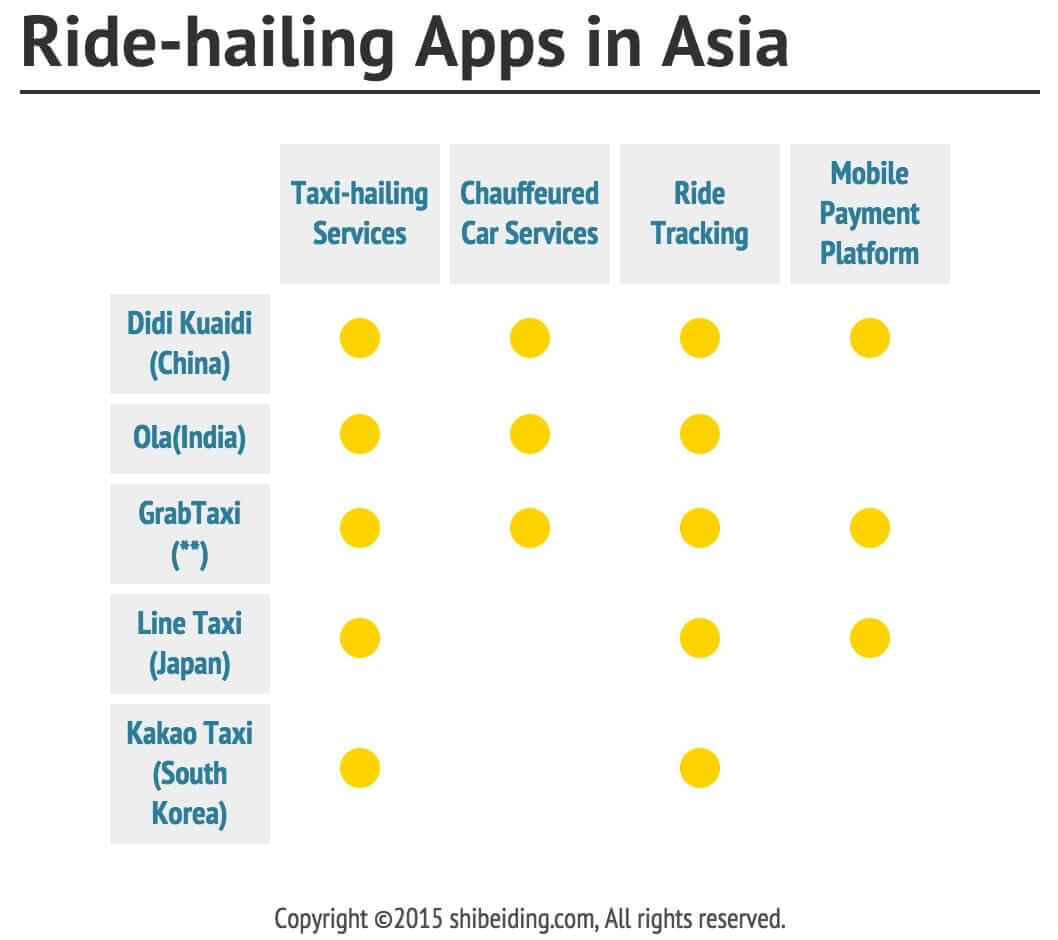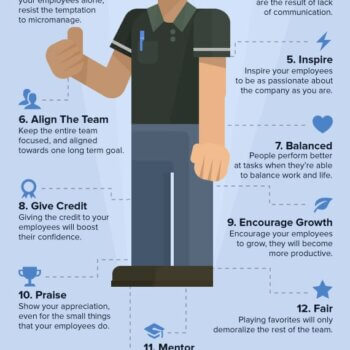Having difficulty in catching a cab during peak hours?
Urging to get chauffeured car services more efficiently?
Realizing the value of a platform that connects passengers and taxi vendors as well as the huge vacancy in the C2C market of motor vehicles, Asian entrepreneurs are putting great effort into their ride-hailing services.
Five ride-hailing services, including Didi Kuaidi, Ola, GrabTaxi, Line Taxi, and Kakao Taxi, in three most populous Asian countries-China, India and Indonesia-as well as three developed Asian countries-Japan, Singapore and South Korea*-are discussed.
GrabTaxi, a Malaysian based startup is active in both the Indonesian and Singaporean taxi market(represented in the chart below as **).
Comparison of Asian born ride-hailing apps, picture edited by Shibei Ding
All five apps provide taxi-hailing services, including encouraging taxi drivers to register and cooperation with local taxi vendors, and ride tracking services, which enable the passenger to follow the track of the service providers before getting into the vehicles.
Didi Kuaidi and GrabTaxi launched their chauffeured car services on Aug 19th, 2014 and May 21th, 2014 respectively, seemingly respond to the entry of Uber, the U.S. born ride-hailing app, to the Asian market.
Funding received by Didi Kuaidi, Ola and GrabTaxi, picture edited by Shibei Ding
Didi Kuaidi, the combined company of the two top taxi-hailing apps Didi Dache and Kuaidi Dache in China, has attracted 6 rounds of fundings, mounting to$959 million in all and is evaluated at $8.8 billion as of March, 2015. The valuation of Didi Kuaiche is still much lower than that of Uber. The gained market share of the two apps are what support Didi Kuaiche when confronting with this world’s top ride-hailing company. However, Didi Kuaidi’s chauffeured car services are facing the same level of restriction as its rival Uber.
Valuation of Didi Kuaidi, Ola and GrabTaxi, picture edited by Shibei Ding
Started only this year, Line Taxi and Kakao Taxi are still new in providing this service. Both being closely connected to the most popular instant messaging app in Japan/Korea is the natural advantage of these two services.
However, Kakao Taxi differentiates from Line Taxi in both the payment method and the way that the service is provided.
First, Line Taxi is built into the original instant messaging app whereas Kakao Taxi is a separate app from Kakao Talk.
Second, Line Taxi requires its users to pay through registered credit car in Line Pay whereas Kakao accepts cash, credit card or any transportation card that’s accepted in Korea. The launching Q&A of Kakao Taxi stresses that they do not require the users to pay through Daum Kakao payment services because they want to “streamline Kakao Taxi experiences as much as possible for all users”.
Ola is another app that does not completely use a mobile payment platform. Although the Ola Money wallet does lead to a cashless ride (it requires the user to register with credit cards, debit cards or net banking), this payment method requires the users to recharge before using it, which makes it one step more than what Didi Kuaidi, GrabTaxi or Line Taxi have to offer.
Notably, Kakao Taxi provides quite some level of privacy protection by deleting the conversation once the ride is completed and masking the driver’s phone number whereas Didi Kuaidi is criticized for showing the destination of the passenger before the driver takes the order, which is said to increase the difficulty for the user to get a ride at a comparatively short distance.
* Brunei is also a developed Asian country, but is excluded in this overview because of its small population, which is less than 50,000
































